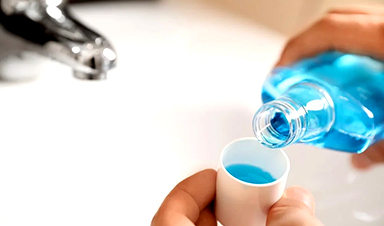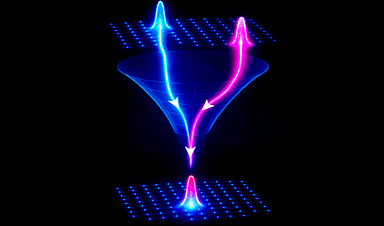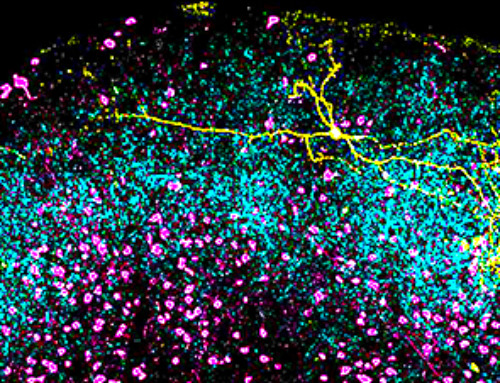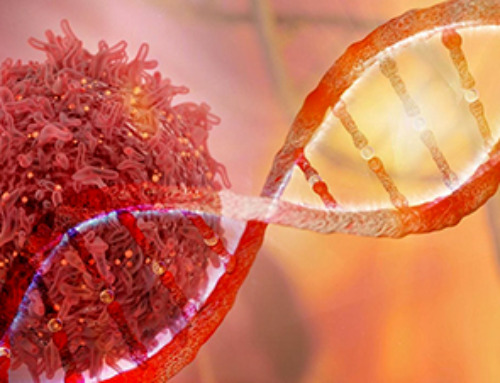A recent study published in Scientific Reports has demonstrated the antiviral effectiveness of cetylpyridinium chloride against severe acute respiratory syndrome coronavirus 2 (SARS-CoV-2) infection. Cetylpyridinium chloride is an ammonium compound commonly present in mouthwash.
Background
Severe acute respiratory syndrome coronavirus 2 (SARS-CoV-2), the causative pathogen of coronavirus disease 2019 (COVID-19) pandemic, is an enveloped, positive-sense, single-stranded RNA virus belonging to the human betacoronavirus family. The virus and its more aggressive variants have caused unprecedented damage to the global healthcare system, with more than 590 million confirmed infections and over 6.4 million deaths.
The primary entry site of SARS-CoV-2 into the human body is the respiratory epithelium, which expresses high levels of the entry receptor angiotensin-converting enzyme 2 (ACE2). Evidence indicates that the virus can replicate in the oral cavity and release into saliva. The literature has also established an association between salivary content of SARS-CoV-2 and COVID-19 aggravation.
Considering the significance of oral hygiene in the context of SARS-CoV-2 infection, scientists in the current study have investigated the antiviral effect as well as the mode of action of cetylpyridinium chloride against SARS-CoV-2 infection.
Cetylpyridinium chloride is an antimicrobial compound widely used in mouthwash to prevent bacterial, fungal, or viral infections in the oral cavity. The compound is known to exert antimicrobial effects by disrupting lipid membrane via physicochemical interactions. A few studies have indicated that cetylpyridinium chloride is effective against wild-type SARS-CoV-2 at low concentrations (10–50 µg/ml).
Impact of cetylpyridinium chloride on SARS-CoV-2 infectivity
The study examined the antiviral effect of cetylpyridinium chloride on a range of SARS-CoV-2 strains, including wild-type SARS-CoV-2 and alpha, beta, and gamma variants. The plaque assay was conducted to examine viral infectivity in the presence and absence of the compound.
The findings revealed that cetylpyridinium chloride at low concentrations (5 – 40 µg/ml) significantly suppresses the infectivity of all tested SARS-CoV-2 strains in a dose-dependent manner. The tested concentrations were lower than that used in commercially available mouthwash (50 µg/ml).
Impact of cetylpyridinium chloride on viral entry
The findings revealed that cetylpyridinium chloride significantly reduces the expression and copy number of viral RNA in a dose-dependent manner. These findings indicate that cetylpyridinium chloride reduces the amount of infectious virus before host cell entry.
Antiviral activity of cetylpyridinium chloride in saliva
Human saliva is highly viscous and contains many proteins that may interfere with the antiviral efficacy of cetylpyridinium chloride. Saliva samples collected from healthy donors were mixed with the virus and cetylpyridinium chloride to determine the antiviral efficacy of the compound in saliva.
The findings revealed that cetylpyridinium chloride significantly suppresses viral infectivity even in saliva in a dose-dependent manner.
Antiviral mode of action of cetylpyridinium chloride
Cetylpyridinium chloride-treated SARS-CoV-2 was subjected to sucrose density analysis and transmission electron microscopy to determine the impact of cetylpyridinium chloride on viral morphology.
The findings revealed that cetylpyridinium chloride does not impact the overall structure of the virus. The spherical particle structure of SARS-CoV-2 remained unchanged after cetylpyridinium chloride treatment.
Study significance
The study highlights the potency of cetylpyridinium chloride in inhibiting SARS-CoV-2 and its variants even at low concentrations. The antiviral activity of the compound remains unchanged in human saliva.
The study has tested the antiviral efficacy of a commercial mouthwash that contains a similar concentration of cetylpyridinium chloride as used in the study. The mouthwash exhibits similar or even better antiviral efficacy than pure cetylpyridinium chloride solution. This indicates that the other ingredients present in the mouthwash do not interfere with the anti-SARS-CoV-2 activity of cetylpyridinium chloride.
Regarding mode of action, the study suggests that cetylpyridinium chloride exerts anti-SARS-CoV-2 activity most probably by denaturing viral proteins and not by disrupting lipid membrane.
Overall, the study indicates that cetylpyridinium chloride-containing products can be used as a preventive measure to reduce the transmission rate and progression of SARS-CoV-2 infection.
An ongoing clinical study is examining the effect of cetylpyridinium chloride on SARS-CoV-2 viral load in the saliva of COVID-19 patients.
News
Lipid nanoparticles discovered that can deliver mRNA directly into heart muscle cells
Cardiovascular disease continues to be the leading cause of death worldwide. But advances in heart-failure therapeutics have stalled, largely due to the difficulty of delivering treatments at the cellular level. Now, a UC Berkeley-led [...]
The basic mechanisms of visual attention emerged over 500 million years ago, study suggests
The brain does not need its sophisticated cortex to interpret the visual world. A new study published in PLOS Biology demonstrates that a much older structure, the superior colliculus, contains the necessary circuitry to perform the [...]
AI Is Overheating. This New Technology Could Be the Fix
Engineers have developed a passive evaporative cooling membrane that dramatically improves heat removal for electronics and data centers Engineers at the University of California San Diego have created an innovative cooling system designed to greatly enhance [...]
New nanomedicine wipes out leukemia in animal study
In a promising advance for cancer treatment, Northwestern University scientists have re-engineered the molecular structure of a common chemotherapy drug, making it dramatically more soluble and effective and less toxic. In the new study, [...]
Mystery Solved: Scientists Find Cause for Unexplained, Deadly Diseases
A study reveals that a protein called RPA is essential for maintaining chromosome stability by stimulating telomerase. New findings from the University of Wisconsin-Madison suggest that problems with a key protein that helps preserve chromosome stability [...]
Nanotech Blocks Infection and Speed Up Chronic Wound Recovery
A new nanotech-based formulation using quercetin and omega-3 fatty acids shows promise in halting bacterial biofilms and boosting skin cell repair. Scientists have developed a nanotechnology-based treatment to fight bacterial biofilms in wound infections. The [...]
Researchers propose five key questions for effective adoption of AI in clinical practice
While Artificial Intelligence (AI) can be a powerful tool that physicians can use to help diagnose their patients and has great potential to improve accuracy, efficiency and patient safety, it has its drawbacks. It [...]
Advancements and clinical translation of intelligent nanodrugs for breast cancer treatment
A comprehensive review in "Biofunct. Mater." meticulously details the most recent advancements and clinical translation of intelligent nanodrugs for breast cancer treatment. This paper presents an exhaustive overview of subtype-specific nanostrategies, the clinical benefits [...]
It’s Not “All in Your Head”: Scientists Develop Revolutionary Blood Test for Chronic Fatigue Syndrome
A 96% accurate blood test for ME/CFS could transform diagnosis and pave the way for future long COVID detection. Researchers from the University of East Anglia and Oxford Biodynamics have created a highly accurate [...]
How Far Can the Body Go? Scientists Find the Ultimate Limit of Human Endurance
Even the most elite endurance athletes can’t outrun biology. A new study finds that humans hit a metabolic ceiling at about 2.5 times their resting energy burn. When ultra-runners take on races that last [...]
World’s Rivers “Overdosing” on Human Antibiotics, Study Finds
Researchers estimate that approximately 8,500 tons of antibiotics enter river systems each year after passing through the human body and wastewater treatment processes. Rivers spanning millions of kilometers across the globe are contaminated with [...]
Yale Scientists Solve a Century-Old Brain Wave Mystery
Yale scientists traced gamma brain waves to thalamus-cortex interactions. The discovery could reveal how brain rhythms shape perception and disease. For more than a century, scientists have observed rhythmic waves of synchronized neuronal activity [...]
Can introducing peanuts early prevent allergies? Real-world data confirms it helps
New evidence from a large U.S. primary care network shows that early peanut introduction, endorsed in 2015 and 2017 guidelines, was followed by a marked decline in clinician-diagnosed peanut and overall food allergies among [...]
Nanoparticle blueprints reveal path to smarter medicines
Lipid nanoparticles (LNPs) are the delivery vehicles of modern medicine, carrying cancer drugs, gene therapies and vaccines into cells. Until recently, many scientists assumed that all LNPs followed more or less the same blueprint, [...]
How nanomedicine and AI are teaming up to tackle neurodegenerative diseases
When I first realized the scale of the challenge posed by neurodegenerative diseases, such as Alzheimer's, Parkinson's disease and amyotrophic lateral sclerosis (ALS), I felt simultaneously humbled and motivated. These disorders are not caused [...]
Self-Organizing Light Could Transform Computing and Communications
USC engineers have demonstrated a new kind of optical device that lets light organize its own route using the principles of thermodynamics. Instead of relying on switches or digital control, the light finds its own [...]





















